Until recently, Australians shopping for a new city car on a budget wouldn’t have even bothered kicking tyres in a European brand’s showroom.
Light Euro tikes have typically been prohibitively expensive to purchase and frightfully costly to service, making their Japanese or South Korean counterparts the default choice.
The Peugeot 208 has always suffered for these reasons, but a recent rejig has cut the baby Pug’s entry price to just $15,990 before on-road costs, putting it on the radars of thousands of buyers who have never given the brand serious thought before.
Meanwhile, the Volkswagen Polo, starting at $16,990, may not be the outright cheapest city car to get into, but with a top-end price of $20,990, its flagship slots in beneath many rivals (Toyota Yaris ZR $21,490, Honda Jazz VTi-L $22,490, Ford Fiesta Sport $22,525, Mazda 2 Genki $22,690, Kia Rio SLi $22,990, Renault Clio Dynamique $23,990) and makes a compelling value-for-money case.
And it’s here where we focus our attention in this European city car twin test, on the Volkswagen Polo 81TSI Comfortline DSG and its closest competitor from the French brand, the Peugeot 208 Active auto, which starts $1000 higher at $21,990.
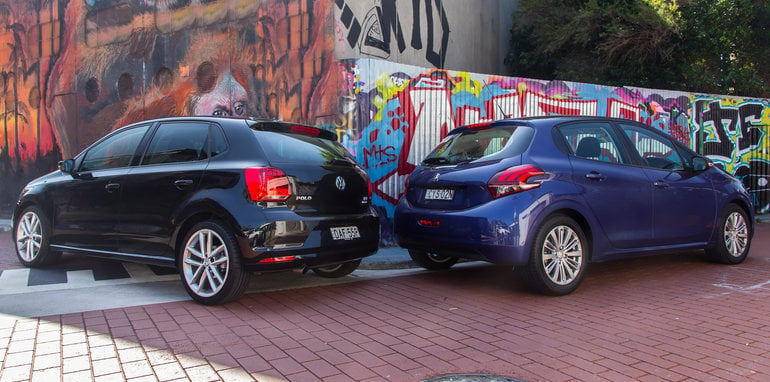
PRICE AND FEATURES
As you see them here, the gap is slightly larger, with the VW coming in $1540 below the Pug.
The Polo is optioned with metallic paint ($500) and the Sport package ($1500), which adds 17-inch alloy wheels (up from its standard 15s and the 208’s 16s), lowered sports suspension, dark tinted rear windows, cornering foglights, and a low tyre pressure indicator (standard in the 208), taking its as-tested price to $22,990 before on-road costs.
The 208 also gets metallic paint, though Peugeot charges twice as much for it ($990), as well as a reverse-view camera for $300 (standard on the Polo) and satellite navigation for $1250 (only available as part Polo Comfortline’s $1900 Driving Comfort package â€" though you can stream sat-nav from your smartphone via Polo’s standard Apple CarPlay/Android Auto functions, which costs you only data on your phone plan).
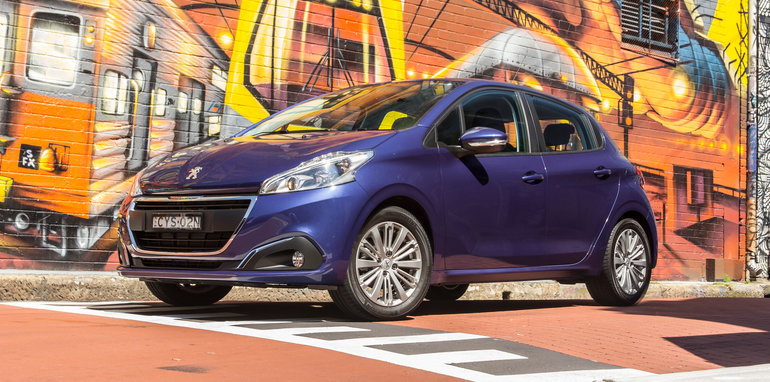
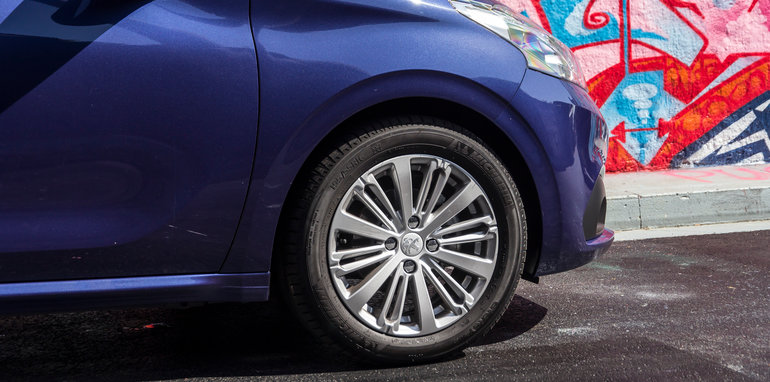
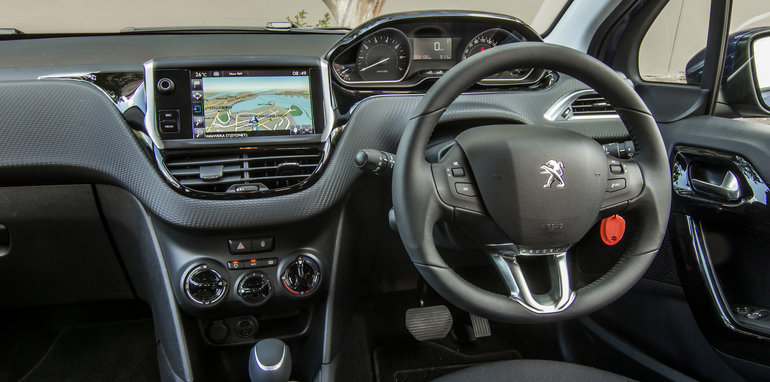
Specified like this â€" and this exact spec is what we’d call the ‘sweet spot’ in the 208 range (barring, of course, the grin-a-minute GTi) â€" the Active costs $24,530 before on-roads. That’s a lot of money, particularly when larger hatches such as the Toyota Corolla and Hyundai i30 (among many others) are regularly offered for around $25,000 driveaway with similar levels of equipment.
Beyond the specification differences already mentioned, the Peugeot 208 Active also exclusively gets LED daytime running lights, rear parking sensors and electric-folding door mirrors, while unique to the Volkswagen Polo 81TSI Comfortline are a CD player, SD card reader, and a height-adjustable passenger seat.
Both also share colour touchscreens (6.5-inch in Polo, 7.0-inch in 208), six-speaker audio systems, Bluetooth phone connectivity, cruise control and leather-wrapped steering wheels.
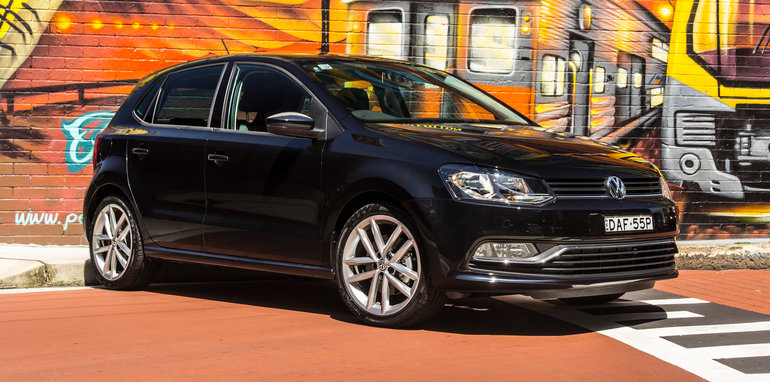
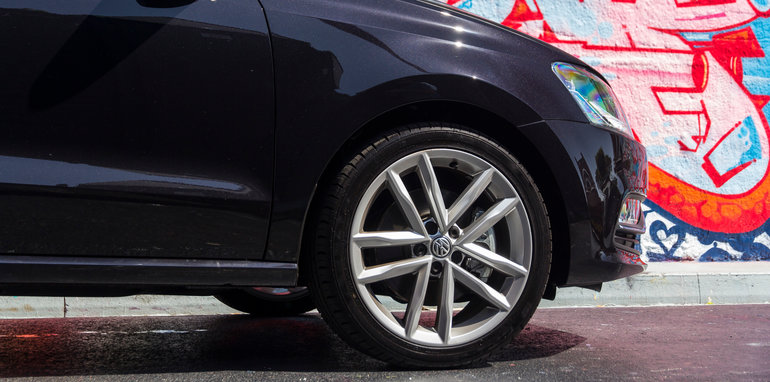
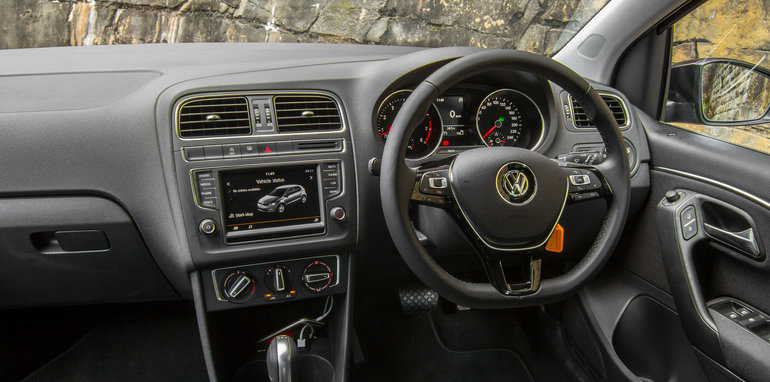
If you can live without the Polo’s big wheels and sharper handling delivered by the sports suspension, we reckon there’s far better value to be had in opting for the Driving Comfort pack over the Sports pack. For just $400 more than the Sports pack, Driving Comfort adds adaptive cruise control, front assist with city emergency brake, a driver fatigue system, auto headlights and wipers, integrated sat-nav, climate control, an auto-dimming rear-view mirror, and a tyre pressure monitor.
Specced like this the Polo still comes in more than $1000 cheaper than the 208 on test while boasting equipment to humble some cars twice its price. Optioning Peugeot’s next-tier 208 Allure to a similar level would cost you roughly $4000 more.
Assessing the cars before us, it’s an easy win to the more affordable yet competitively equipped Volkswagen, and it’s also clear that your money goes further when ticking boxes on the Polo’s order form.
WARRANTY, SERVICING AND RUNNING COSTS
While the Volkswagen Polo and the Peugeot 208 may be priced and equipped more competitively than ever before, they remain extremely expensive to service. Both come with capped-price servicing and require attention at 12-month/15,000km intervals. Over five years or 75,000km, it’s the Peugeot that will do the least damage to your wallet, costing $2500 versus $2818 for the Volkswagen ($500 per service versus $562.40).
Neither compares favourably to the variable capped-price servicing of the rival Mazda 2, for example, which costs as little as $1606 over the same period if your mileage is low (10,000km per year), and no more than $2258 if you do lots of kays.
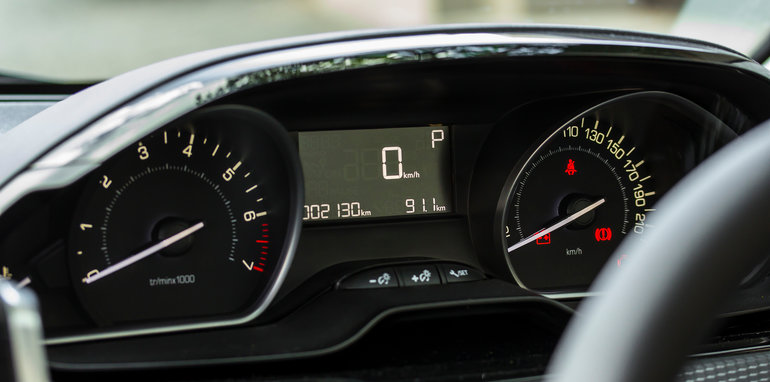
Ultra-high-mileage owners will prefer Volkswagen’s three-year, unlimited kilometre warranty, though for most Peugeot’s three-year/100,000km coverage will be equivalent. Both also come with roadside assistance for the duration of their warranties.
Fuel is the other major running cost, and despite demanding more expensive 95 RON premium unleaded petrol, both boast super-frugal sub-5.0L/100km combined cycle fuel consumption ratings. The 208 claims efficiency supremacy on paper (4.5L/100km versus 4.8 for the Polo), though our real-world testing flipped this, with the Volkswagen using the least fuel of the two (6.8L/100km versus 8.3 for the 208). Depending on which figures you take, the difference works out to be either $60 per year in favour of the Peugeot or $300 per year in favour of the Volkswagen (based on current fuel prices and 15,000km mileage per year).
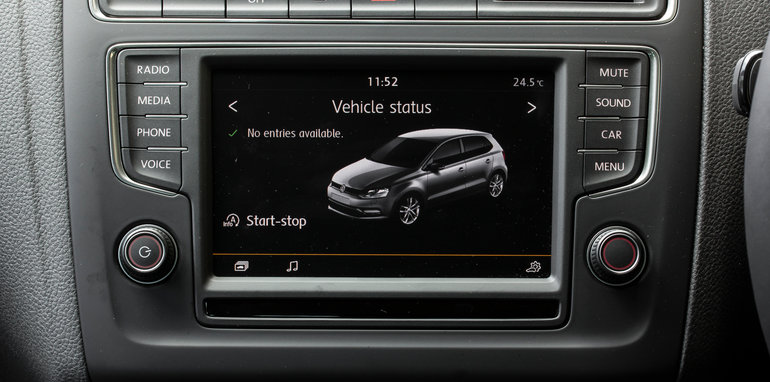
ENGINE AND TRANSMISSION
Both cars are powered by 81kW 1.2-litre turbocharged petrol engines, though each has its own way of making that power and driving the front wheels.
The Peugeot 208 teams a three-cylinder engine with a conventional six-speed automatic transmission, while the Volkswagen Polo has both an extra cylinder and an extra ratio in its dual-clutch (DSG) auto.
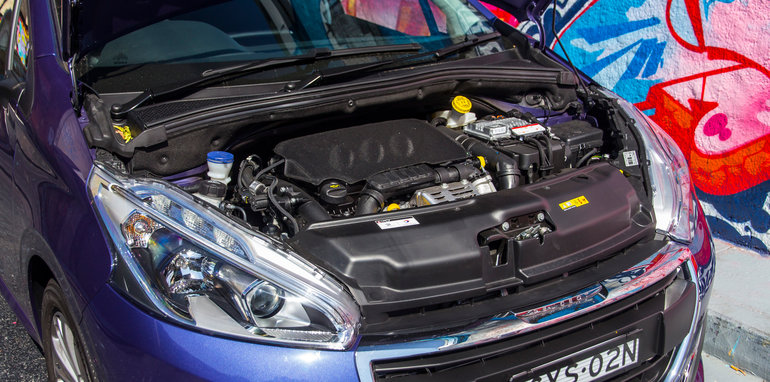
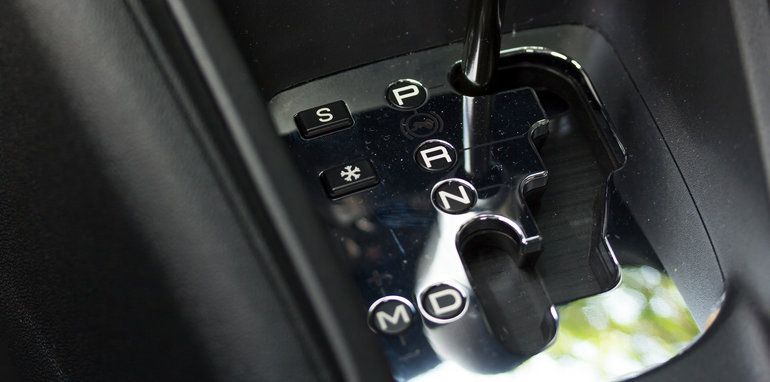
The Peugeot’s 205Nm torque figure is a healthy 30Nm up on the Volkswagen, though the latter delivers its 175Nm peak over a broad 1400-4000rpm range, whereas the former hits its zenith at 1500rpm but doesn’t maintain it.
This wide peak torque band gives the Polo more linear acceleration, and helps launch it from 0-100km/h more than a second and a half quicker than the 208 (9.3sec versus 10.9), despite the Peugeot being the lighter of the two.
While both are a little hesitant accelerating from a standstill, they spin sweetly from around 2000rpm and feel as strong as any non-performance city car you can buy. The gap is widest between the two under steady acceleration, when the Volkswagen feels noticeably meatier. The Polo’s engine is also quieter and more refined, but we can forgive the 208’s triple for being more characterful.
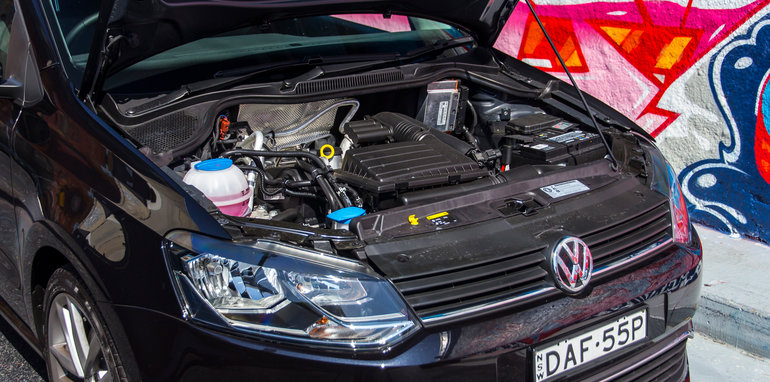
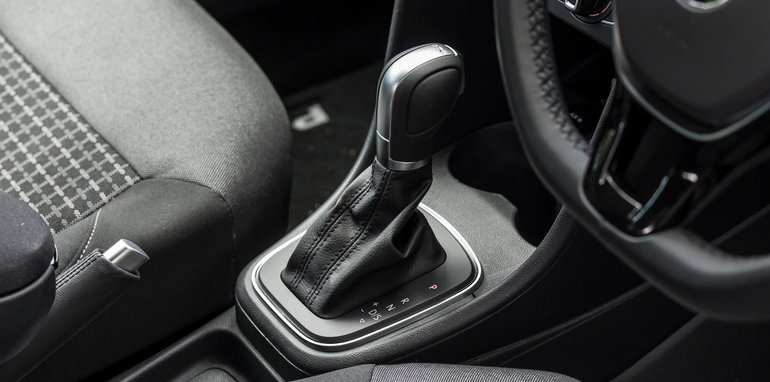
The Polo’s transmission is smoother and swifter, while the 208’s can slur between ratios and clunked occasionally with colleague Matt and myself behind the wheel. Both cars diligently seek higher gears in the pursuit of maximum efficiency, though the VW’s DSG is quicker to downshift when more power is needed, whereas the 208’s auto relies more heavily on the engine’s low-down torque and subsequently feels less responsive and sounds grumblier.
The Peugeot is also gruff as its engine comes back to life after switching off at idle (though as we discovered on a hot Sydney day, the stop-start system disables itself at outside temperatures roughly 35 degrees and above, limiting its fuel-saving ability in summer). While less fazed about sweating it out, the Polo’s stop-start system can also feel jerky and haphazard, particularly when the hill start assist system is also involved.
STEERING, RIDE AND HANDLING
The Peugeot and the Volkswagen have entirely different dynamic characters.
The 208’s suspension is far softer than its sports-tuned rival on this test. Around town it glides more smoothly over big speed humps and irons out ripply imperfections, where the Polo picks up more of the bumps. Previous experience with the Polo’s standard suspension and smaller wheels has shown it to be more comfortable and compliant.

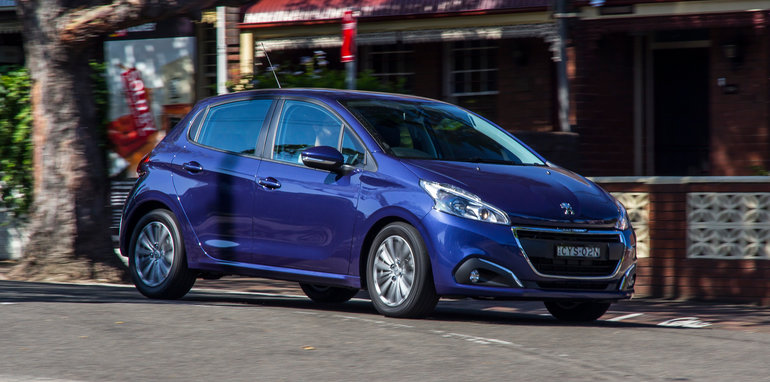
Regardless, there’s an inherent quality to the Volkswagen that makes it feel more solid and sophisticated overall. Its suspension is much quicker to resettle after bumps, giving it a unique sense of composure over consistently pockmarked surfaces. Its suspension is also quieter, making impacts seem less severe.
Around country corners at higher speeds the Polo feels balanced and controlled, instilling confidence in the driver. It ignores mid-corner bumps, where the 208 shimmies its petite French derrière.
The Polo’s tyres are better (it wears Continental ContiPremiumContact2 versus the 208’s Michelin Energy Savers), producing less road noise and gripping well. It also possesses consistent, progressive steering. For 91-year-old Agnes or 19-year-old Anemone (kids have such stupid names these days), it’s the one we’d recommend.
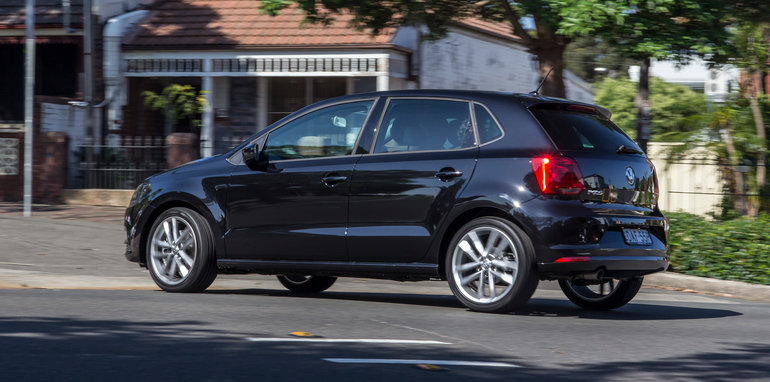
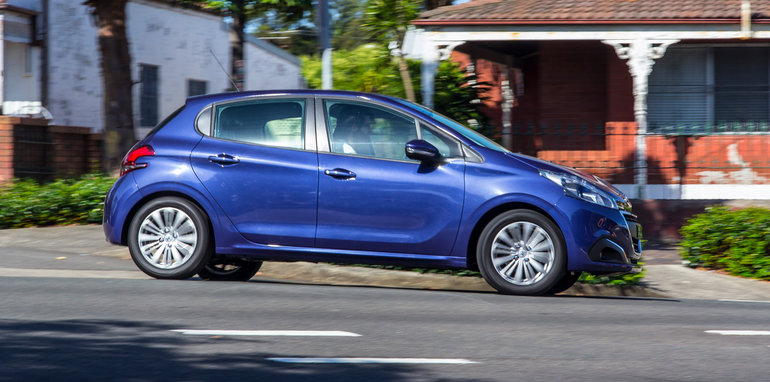
And yet, it’s the Peugeot that’s far more engaging to punt around. Every input â€" be it throttle, brakes or steering â€" prompts an immediate reaction. Its softer set-up means it rolls more, though even that injects some excitement where the Polo feels comparatively sedate.
The Pug’s steering is also darty and direct, and weights up as you apply more lock â€" good for corners, though it can be a tad heavy around town. It’s an involving little car that’s made even more chuckable by the tiny, go-kart-style steering wheel that feels sweet in your hands.
INSTRUMENTS AND INFOTAINMENT
Despite its diminutive diameter, some find it gets in the way of the 208’s instrument cluster, which is designed to be viewed over rather than through the steering wheel. Both Matt and myself love the concept, which brings important information closer to your line of sight, though others in the office complain that it obscures their view and throws out their seating position. We recommend heading to a dealership and testing it out for yourself.
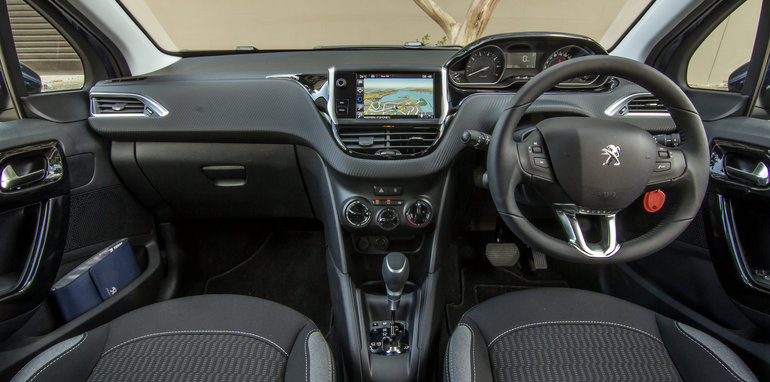
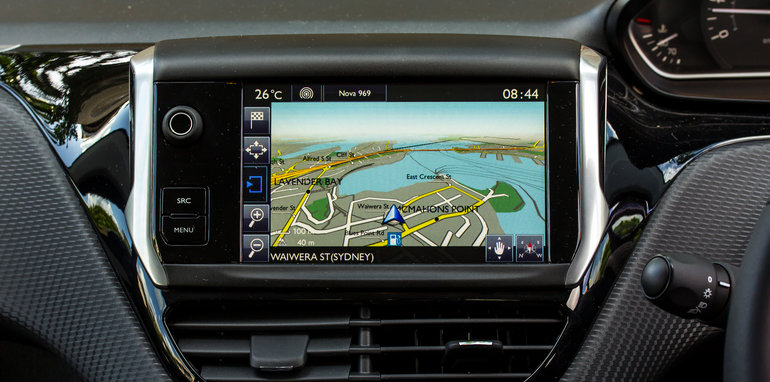
The Peugeot’s cabin has a great ambience. The big windows let in lots of light and the high ceiling makes it feel spacious, while the dashboard layout, with its soft-touch carbonfibre-look trim and large infotainment touchscreen with blue tones, looks refreshingly stylish and modern.
The Volkswagen can’t match that interior airiness but offers additional storage space, including a glovebox that â€" unlike the Pug’s tiny ‘box â€" can store the owner’s manual, as well as bigger cup holders, more space beneath the centre stack, and storage inside its centre armrest.
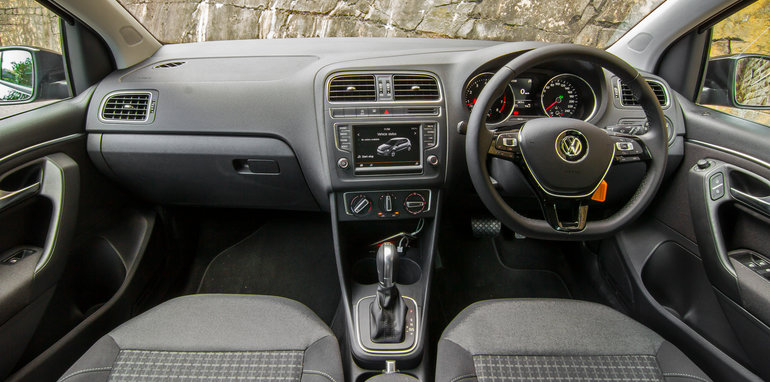
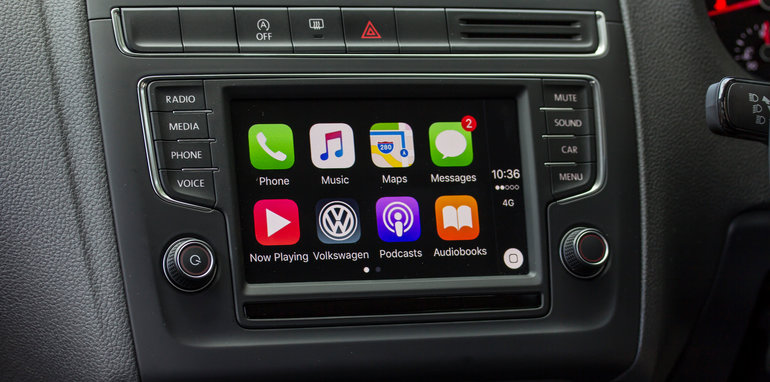
The Polo’s interior may be more conservative but it’s undeniably more mature and upmarket. Its materials are far nicer overall, particularly the smooth leather on the steering wheel, the use of cloth on the door trims, the soft headliner versus the Peugeot’s abrasive one, the quality hard plastics versus the Pug’s thin and scratchy panels, and the satin chrome highlights throughout that look classier than the 208’s shiny chrome that sometimes catch the sun and shoot it into your eyes. It may be cliché, but the Volkswagen’s doors also close with a much nicer thunk than the Peugeot’s that clatter into place.
Like the instrument cluster, the 208’s touchscreen sits closer to your line of sight, making it a little easier to glance and tap away at. The Polo’s system is more intuitive to use, however, and its inclusion of CarPlay and Android Auto makes it more versatile and customisable, and will allow it to evolve as the technology advances.
SEAT COMFORT AND BOOT
Both rivals’ front seats are comfortable and supportive, though the driver’s view out the rear is slightly better in the Volkswagen thanks to its small but useful third side windows.
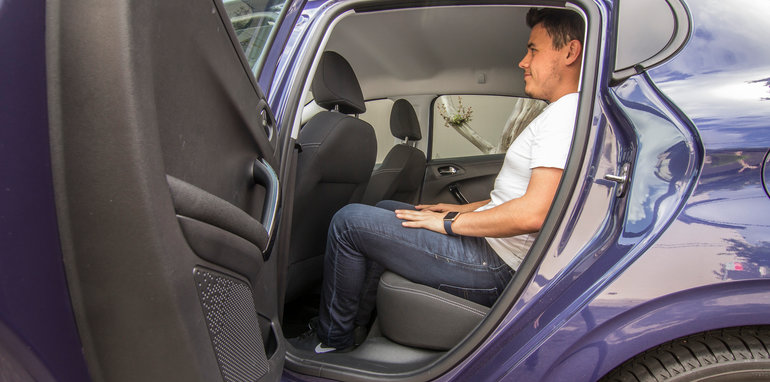
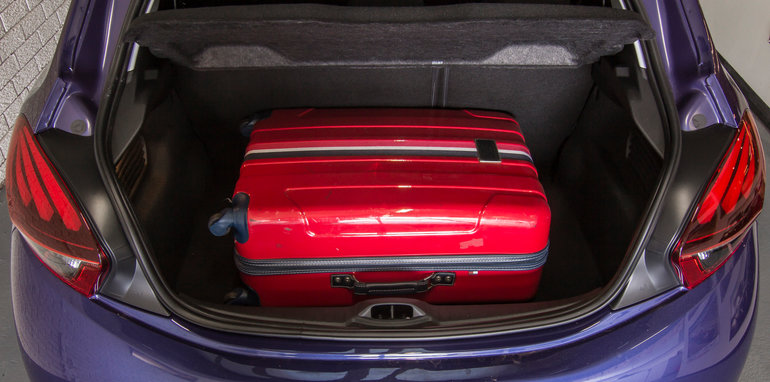
The Polo’s rear seat bases are softer and better angled to provide under-thigh support, but the 208 is more spacious, offering better kneeroom, marginally more headroom, and more comfortably seating three across its bench (though preferably still only for short trips).
The Peugeot’s 311-litre boot is among the largest in the city car class and takes the points over the Polo’s 280L cargo space. Both come standard with a full-size steel spare wheel beneath the boot floor, though the Polo’s spare stays at 15-inches with the Sport pack optioned.
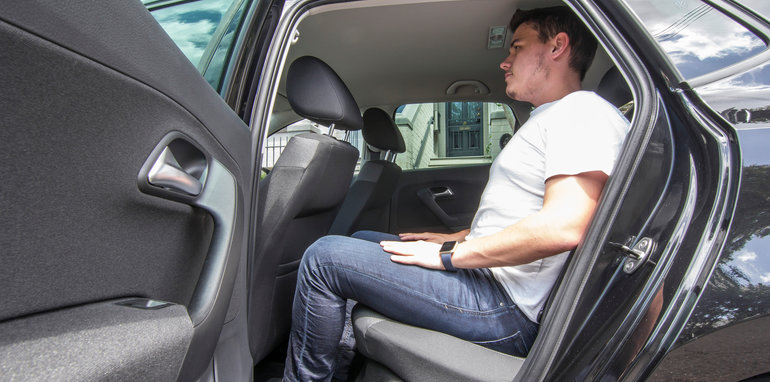
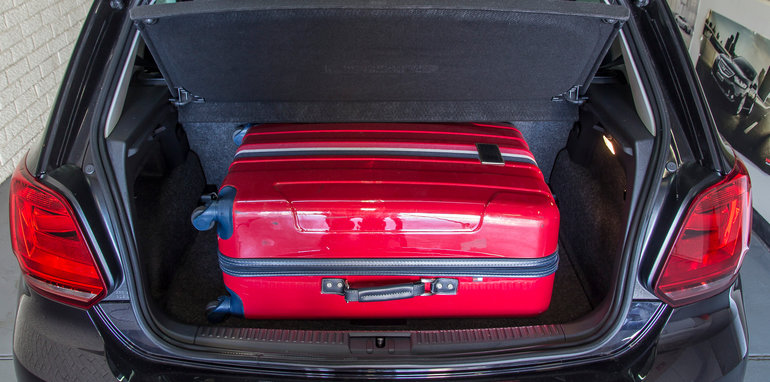
VERDICT
As we said earlier, if we had to buy a Peugeot 208 without a GTi badge, this is the exact one we’d choose. The Active auto offers the best value of the range while delivering fun-to-drive dynamics and a stylish, spacious and comfortable interior.
But viewed in the context of its class, it remains $3000 overpriced, could use a more confidence-inspiring warranty, and lacks the powertrain and ride sophistication of the segment leaders.
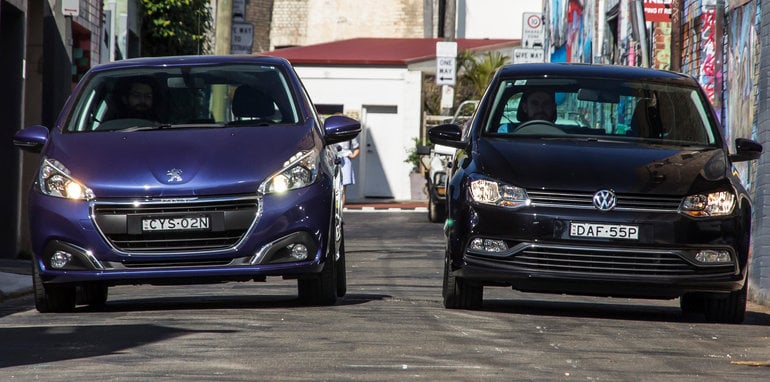
Which brings us to the Volkswagen Polo, which claims a convincing win in this twin test. Like the 208 Active, the 81TSI Comfortline is the pick of the bunch, and would score even higher here if fitted with the Driving Comfort pack. Manual drivers get even greater value, saving a whopping $2500 over the DSG.
It isn’t perfect, being expensive to service, riding firmly with the Sports pack, and being a little tight in the back.
But with a refined and efficient powertrain, impressive dynamic depth, class-leading interior refinement, a modern infotainment system, the availability of advanced safety features, and, crucially, a value equation that more than stacks up against traditional top-sellers, the Polo remains the most accomplished mainstream city car money can buy.
Click the photos tab for more images by Mitchell Oke.
Comments
Post a Comment